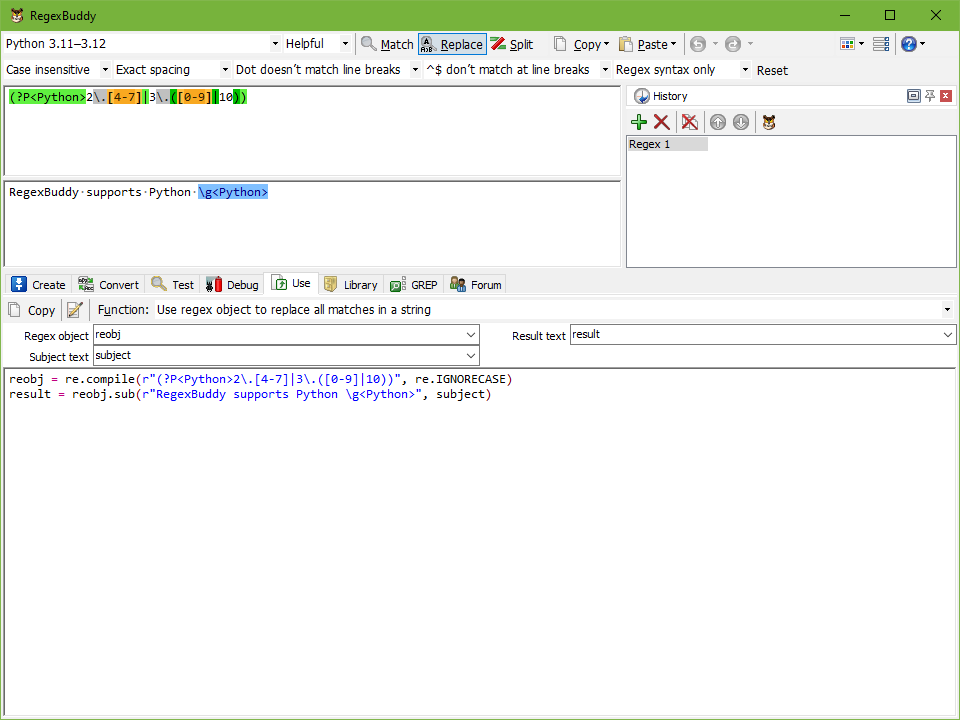

Python regex tester how to#
Finding Percentages - How To Find Percentage - iPracticeMath. Percentages may be calculated from both fractions and decimals. Cube Gift Childrens Calculate Games Mathematics Numbers Cube Puzzle Learning Education. We convert a fraction into a percent by dividing the numerator by the denominator, then multiplying the quotient by 100. Fraction to Percent - Conversion & Practice - Expii. search ) ( '.+', 'What is your favourite coffee flavor \nI prefer the Mocha', re. See the example below: regex_object = (http : //re. Introducing the re.DOTALL flag will match a newline character. The '.' character only finds a match from the beginning of the string and stops at the newline. search ) ( '.+', 'What is your favourite coffee flavor \nI prefer the Mocha' ) print (regex_object. Introducing this flag will also match a newline in a block of text or string. The '.' special character matches any character except a newline. The re.I ensures that a match object is found, regardless of whether it’s in uppercase or lowercase. search ) ( 'django', 'My tech stack comprises of python, Django, MySQL, AWS, React', re. The regex engine will ignore uppercase or lowercase variation of regular expression patterns: regex_object = (http : //re. This flag is used when performing a case-insentive match.

The flags are optional arguments that specify how the Python regex engine finds a match object. Python allows the use of flags when using re module methods like search() and match(), which gives more context to regular expressions. The search begins at string index position of 20 and stops at 30.
Python regex tester code#
The code above picks out any alphanumeric character in the search string. search ( 'find the alphanumeric character python3 in the string', 20, 30 ) print ( (http : //mo. The value for both pos and endpos can be passed as arguments in the search() or match() methods after the string. endpos indicates where the search for a match should stop. The pos value indicates the index position where the search for a match object should begin. A match was found - ' any' - starting from position 5 and ending at 9. The example above has a regex pattern for matching any word character after a whitespace. search ( 'Match any word after a space' ) print ( 'Match begins at', mo. The start() method returns the start index, while the end() method returns the end index of the match object: regex_object = re. search ( 'Pick out the phone number: +233 ' ) print (mo. Let’s see some code examples to further clarify: search_result = (http : //re. Return None if the string does not match the pattern note that this is different from a zero-length match.

If zero or more characters at the beginning of string match the regular expression pattern, return a corresponding match object. Return None if no position in the string matches the pattern note that this is different from finding a zero-length match at some point in the string. Scan through string looking for the first location where the regular expression pattern produces a match, and return a corresponding match object. But while the search() function scans through an entire string to find a match, match() only searches for a match at the beginning of a string. The re.search() and re.match() search through a string for a Python regex pattern and return a match if found or None if no match object is found.īoth functions always return the first matched substring found in a given string and maintain a default value 0 for flag. re.search(pattern, string, flags=0) vs re.match(pattern, string, flags=0) The re module has functions such as re.search(), re.match(), and re.compile(), which we’ll discuss first.


 0 kommentar(er)
0 kommentar(er)
